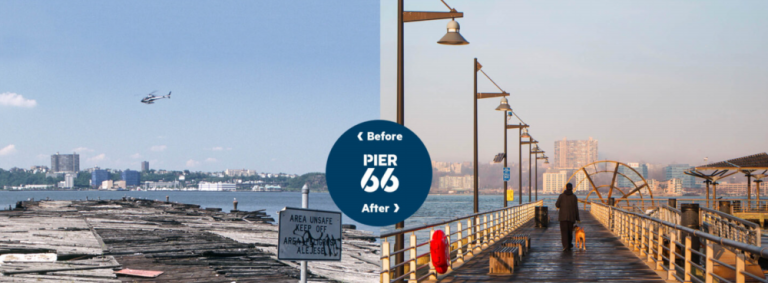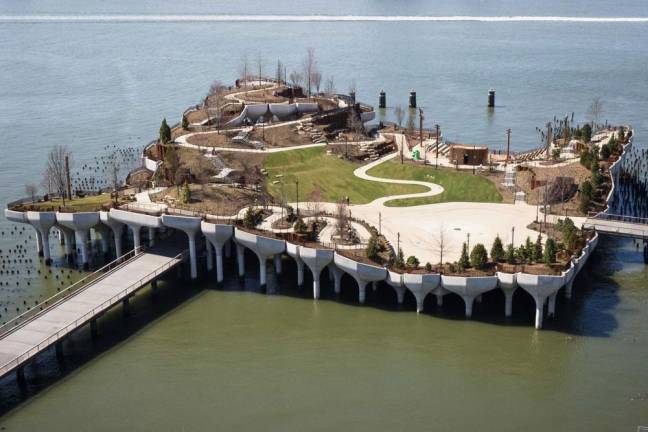Hudson River Park Celebrates 25 Years, With Desolation Transformed Into Greenery
With an anniversary gala imminent, the 550-acre expanse has become a recreational and environmental powerhouse. It used to be relatively bleak, as the park’s overseers have displayed in a series of before-and-after photos.


The Hudson River Park will be hosting a 25th anniversary gala on October 12, which will serve to highlight the complete transformation of a 550-acre stretch of Manhattan waterfront. With new projects such as as a revamped Pier 97 on the way (a revamped Pier 57 opened in April), it increasingly seems like the park is one of the most expansive urban reconceptualizations in twenty-first century New York.
The park’s own website summarizes the dire conditions that had plagued early park advocates: “By the 1980s, Manhattan’s Hudson River waterfront was largely a derelict landscape of barbed wire, crumbling piers, parking lots and decaying warehouses.” Certain obstacles to reimagining the waterfront held until September of 1998, when the Hudson River Park Act was signed into law by then-Governor George E. Pataki.
The NY State legislature had noted in the bill–passed in June of that year–that the “planning and development of the Hudson river park as a public park is a matter of state concern and in the interest of the people of the state.”
More specifically, they concluded that the park “will enhance the ability of New Yorkers to enjoy the Hudson river, one of the state’s great natural resources; protect the Hudson river, including its role as an aquatic habitat; promote the health, safety and welfare of the people of the state; increase the quality of life in the adjoining community and the state as a whole; help alleviate the blighted, unhealthy, unsanitary and dangerous conditions that characterize much of the area; and boost tourism and stimulate the economy.”
If a series of before-and-after photos released by the Hudson River Park Trust is any indication, blight alleviation has been progressing at a steady clip.
Pier 66 is now a firm wooden promontory, where it once appeared as a toothy and rotted gash befitting nuclear winter. A telling “Area Unsafe” sign is a thing of the past. Pier 64, which before had resembled a bombed-out warehouse, now sports verdant English Oaks and crabapple trees.
In 2013, media mogul Barry Diller and his wife, the fashion designer Diane von Fürstenberg, shelled out an estimated $260 million to the Hudson Park Trust (via their family foundation) to build Pier 55. Now colloquially known as the Little Island, it was functionally a replacement of Pier 54, which had been obliterated by Hurricane Sandy.
The 2.4 acre park is one of the most expensive public-private partnerships in NYC history, and combines organic and human-engineered attractions with the hope of creating a dynamic visitor experience. It officially opened to the public in May of 2021, with an additional $120 million secured to fund it through the decade.
The ‘98 law also created the Hudson River Park Estuarine Sanctuary, essentially a carve-out for preserving 400 acres of the Hudson River within the park’s boundaries. “Management Plans” for the sanctuary followed, with the first iteration finished in 2002. The sanctuary’s “action agenda” for the coming decade includes priorities such as: improving water quality and species productivity, creating green infrastructure, reducing trash, and enhancing safety for visitors while also expanding public access.
The report notes that “aside from providing critical habitat for fish like seahorses, eels and striped bass, the Sanctuary also serves as a vital migration corridor for birds and other wildlife.”
In other words, public recreation projects will have to exist alongside conservationist objectives. Meanwhile, the waterfront–which, before the arrival of European settlers, was home to the Lenape tribe–will continue to evolve.